Irogami – background or how it all began 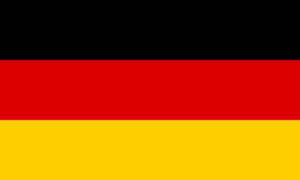
Origami (japanese: oru = folding, kami = paper) is known as the art of paper folding, which is associated with Japan. By the folding of a mostly quadratic paper, two- or three-dimensional objects or geometric figures can be formed without using scissors or glue. The crane, which is probably the best-known classical folding model, has become an international peace symbol against nuclear war.
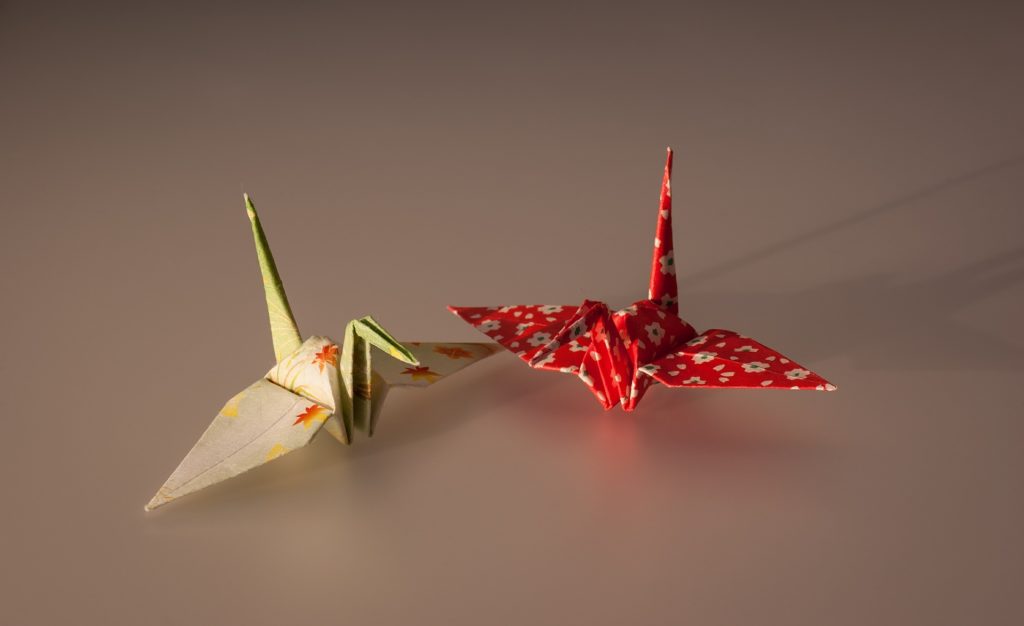
More complex models only originated in the 20th century. The folding of such models can take several hours. By now, several origami subdomains exist. For example, it is called „tangrami“, when several equal modules are used to form a 3d figure.
Here is the example of an unprocessed icosahedron model:
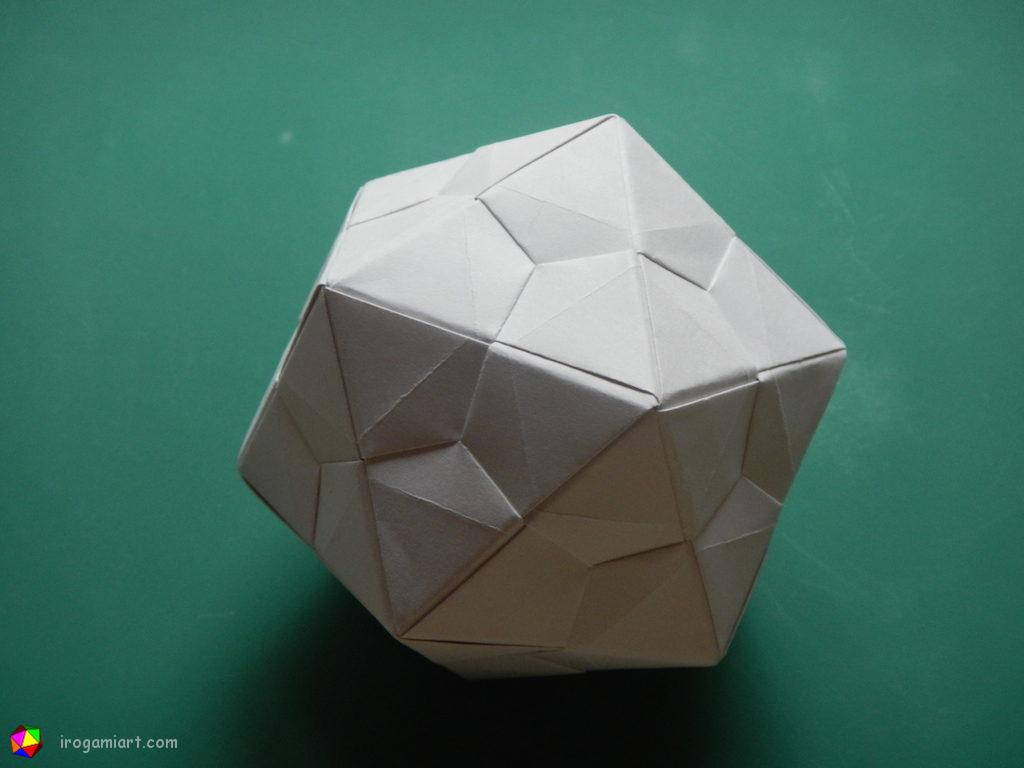
People normally use standard origami paper sold in a specialist shop, but a simple white quadratic notepad can be found in any office. However, a white 3D model looks quite boring, therefore the idea of ornamental painting emerged:
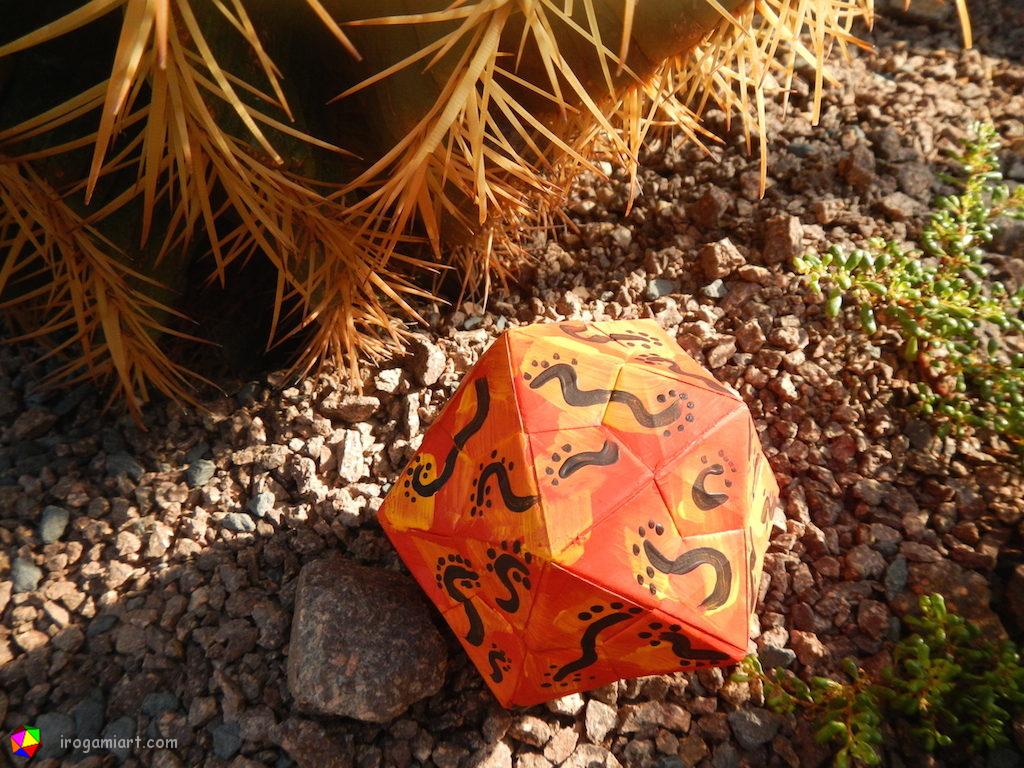
This might not be the first origami website ever, but the first with painted origami models. The name „Irogami“ didn’t accidentally come into existence, but it is derived from japanese „Iro“ for color and „gami“ for paper. Yet the word is not new since the japanese company Electronic Bamboos have developed an app named „Irogami“. Moreover, there is an Irogami-lake, 200km north of Milwaukee, Wisconsin.
Go to „Making Off“ to read how colored icosahedrons are produced.
Multiple possible applications exist for Irogami
The following model was a birthday present for a friend.
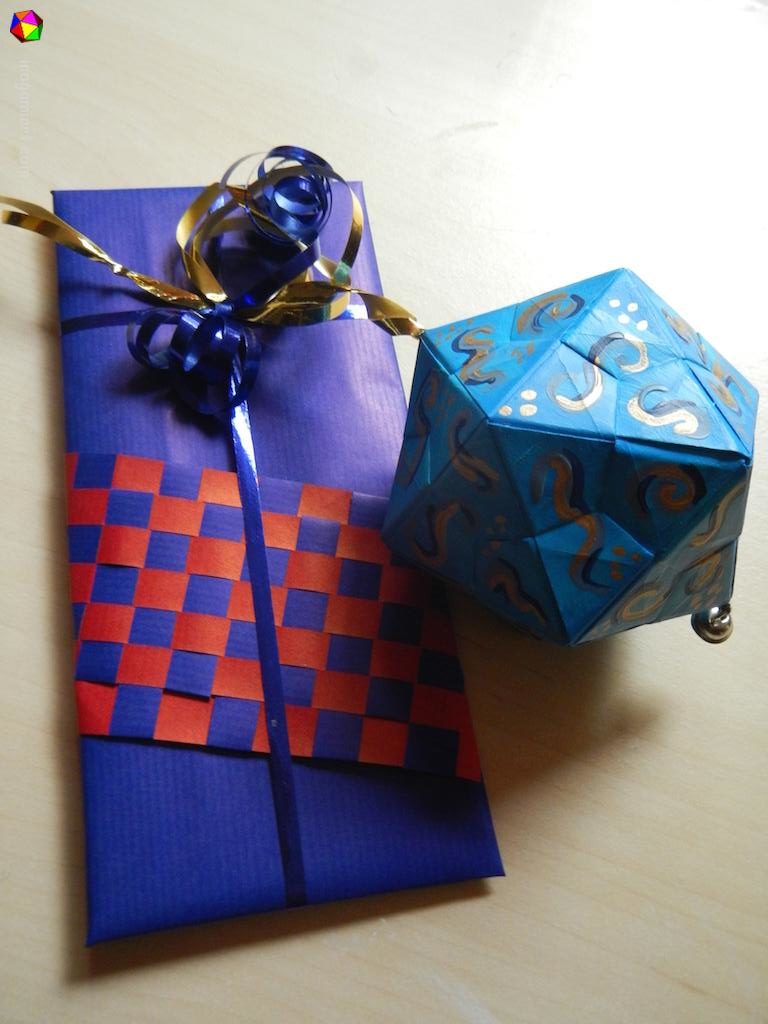
These Basketta stars are attached to the curtain rail of my window.
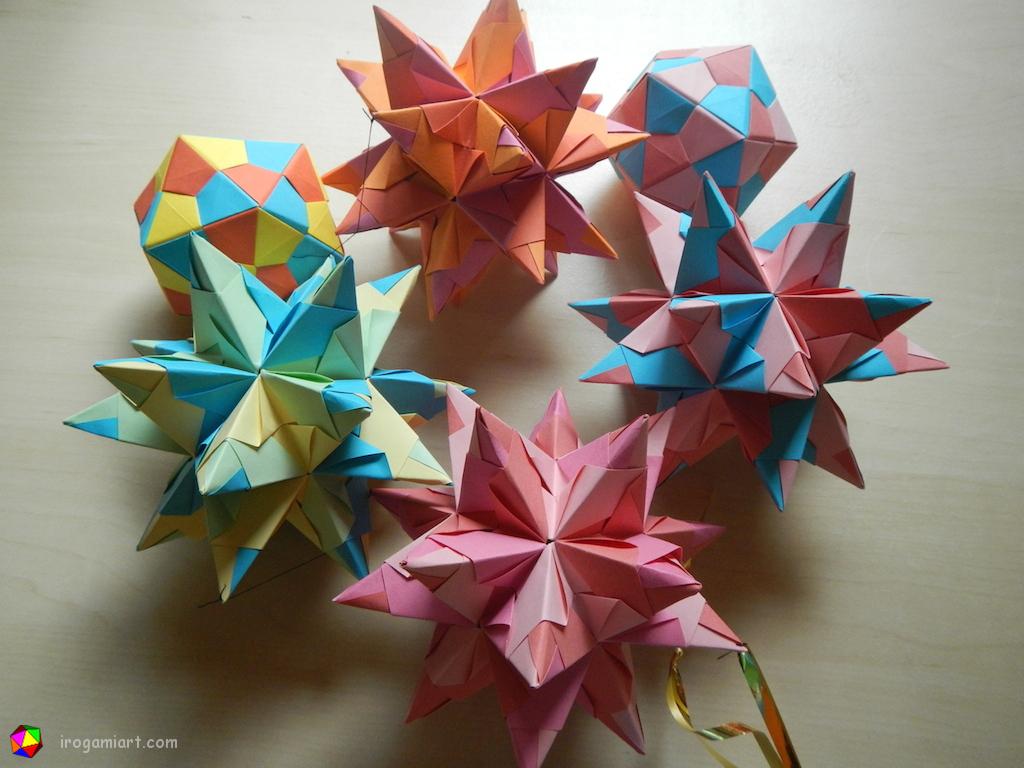
Three icosahedron models decorate plants in my living room.

My colleague is a big Disney fan. The Mikey Mouse icosahedron was a present for her graduation and dangles now on her desk light in the office.
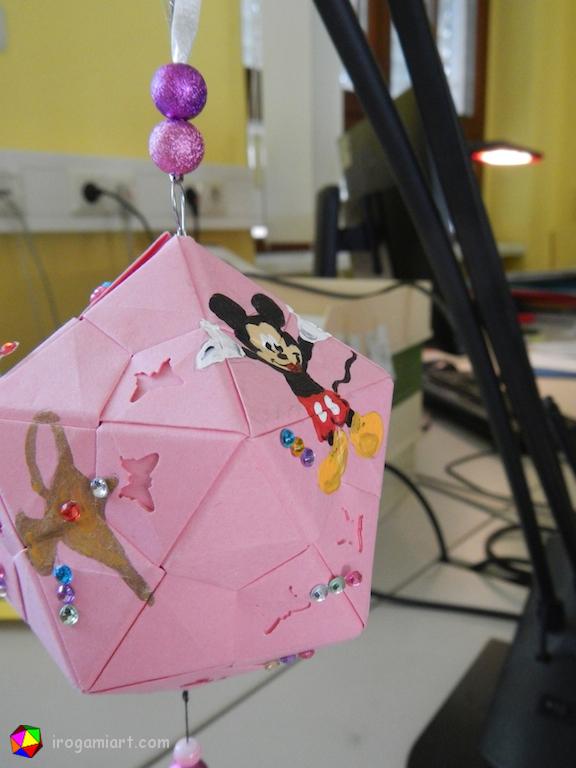
Find more ideas and suggestions here.
Back to gallery.
